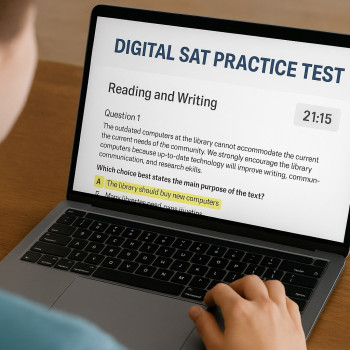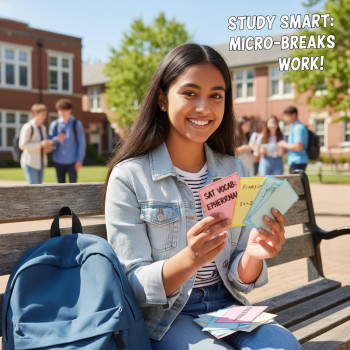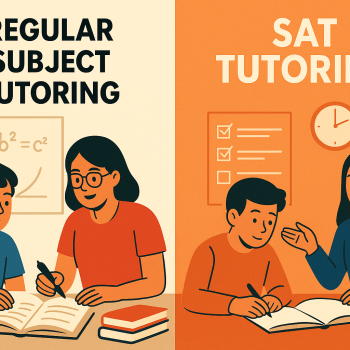Introduction — Why a Gap Year Can Be a Brilliant Move
There’s a quiet revolution happening in the path to college: more students are choosing to take a gap year after finishing high school and after completing their SAT. If that idea has crossed your mind — whether you’re the student dreaming of discovery or the parent weighing pros and cons — you’re in the right place. A successful gap year can sharpen goals, deepen maturity, and even improve academic outcomes. But like any meaningful venture, it needs structure, purpose, and a plan.

What a Gap Year Really Is (and What It Isn’t)
Let’s clear the air first. A gap year is not just a long break — it’s a deliberate period of time (usually a semester to a year) used for intentional experiences: travel, work, internships, volunteering, creative projects, language study, or skill-building. Think of it as a structured bridge between high school and college.
Done well, a gap year is a year on: you come back to academics with clearer goals, stronger independence, and often a richer application narrative. Done poorly, it can turn into drifting — and that’s what most people worry about. The difference is in planning.
Ask Before You Leap: Questions to Help You Decide
Before committing, sit down with a checklist. Honest answers will make your year a win.
- Why do I want a gap year? (Recharge, explore a career interest, travel, earn money, volunteer, strengthen application?)
- Do I have a plan for how the year will be used, or is it “we’ll see”?
- Have I talked with the colleges I applied to or plan to apply to about deferral policies?
- What are my financial constraints — and how will I pay for activities, travel, or a program?
- What skills, experiences, or evidence will I gain that I can communicate to colleges or employers?
Practical Steps to Plan a Powerful Gap Year
Transforming intention into impact means mapping the year. Below is a step-by-step plan you can adapt.
- Choose goals (academic exploration, career experience, language fluency, personal growth).
- Decide structure: completely self-directed, a formal gap-year program, or a hybrid (work + course + volunteer).
- Confirm deferral policy with the college: get the deferral in writing, know deposit and housing rules.
- Create a budget and timeline. Include savings goals, emergency fund, and realistic cost estimates.
- Plan deliverables: coursework completion, hours logged for volunteering, projects, or a portfolio.
- Think about maintaining academic momentum: take one online community college course, keep reading broadly, or use targeted study sessions to maintain test-ready skills if you think you may retake tests or want to stay sharp academically.
Sample Gap-Year Timeline
| Month(s) | Focus | Example Activities |
|---|---|---|
| Months 1–2 | Transition & Planning | Research programs, confirm college deferral, finalize budget, book travel |
| Months 3–6 | Immersion | Internship, language school, volunteer placement, paid work |
| Months 7–9 | Skill Building | Online courses, certifications, creative project (film, research, business) |
| Months 10–12 | Reflection & Re-entry | Compile portfolio, write college deferral report if required, finalize finances for matriculation |
Top Gap-Year Pathways — What Students Actually Do
There’s no single right path; patterns emerge. Here are common, high-impact options and what they deliver.
1) Internship or Apprenticeship
Get real-world exposure in a field you might major in — engineering internships, research labs, nonprofit program support, or startup roles. Benefits: professional skills, resumes with concrete accomplishments, letters of recommendation, clarity about majors and career paths.
2) Paid Work to Save for College
Working a steady job (retail, hospitality, remote freelancing, or seasonal jobs) builds financial independence and responsibility. It’s practical and families appreciate the reduced financial pressure.
3) Volunteering & Service Programs
Volunteering (local or abroad) can deepen empathy, project-management skills, and cultural understanding. Choose programs where you can measure impact rather than simply being a tourist in service clothing.
4) Academic Enrichment
One or two community-college courses, coding bootcamps, or language immersion programs keep your mind sharp. Academically focused gap years can make your college transition smoother and sometimes let you place out of introductory courses.
5) Travel with Purpose
Travel that includes structured work, internships, or research opportunities broadens perspective. Avoid aimless travel; choose thematic goals (e.g., study ecosystems, document urban planning, learn regional histories) to return with stories and skills.
How to Keep Your College Application & Admission Safe
Parents often worry: will a gap year jeopardize an offer? If you handle three things, your admission remains secure.
- Communicate early and in writing with the admissions office. Ask about deferral policies, deadlines, and deposit requirements.
- Follow any deferral instructions (some schools ask for a letter outlining your plan or interim updates).
- Maintain records of meaningful activities — hours, deliverables, evaluations, or artifacts to share on return.
Showcasing Your Gap-Year Experience on College Applications
A gap year isn’t just a story; it’s evidence. Admissions committees want to see learning, reflection, and measurable outcomes. Here’s how to translate your year into college-ready language.
- Quantify: number of hours worked, people served, items built, miles researched, languages studied.
- Reflect: what did you learn about persistence, leadership, collaboration, or problem-solving?
- Produce artifacts: a portfolio, a short film, a research summary, or a project website.
- Stay connected: obtain a recommendation from a supervisor or program leader who can vouch for your contribution.
Academic Momentum: Avoiding the Rusty-Brain Problem
One real risk of a gap year is losing study habits. Keep a light academic routine:
- Read widely — a mix of fiction and nonfiction linked to academic interests.
- Complete one online course or certification a semester (many universities accept transfer credits or consider prior learning).
- Practice academic skills for 2–4 hours a week: math problem sets, writing prompts, or logic puzzles.
For students who want structure, Sparkl’s personalized tutoring can help maintain and strengthen academic muscles during a gap year through tailored study plans, 1-on-1 guidance, and targeted review sessions that fit a busy schedule.
Budgeting Your Gap Year: Smart Financial Moves
Money shapes possibilities. Use a simple budgeting approach and consider multiple income streams to keep the year sustainable.
- Start with a list: travel costs, housing, food, program fees, insurance, contingency fund.
- Look for paid internships, remote work, or short-term gig jobs to contribute to the budget.
- Scholarships and grants exist for gap-year programs — research and apply early.
- Set aside a deposit if your college requires it to hold your place.
Health, Safety, and Mental Wellbeing
Whether you’re traveling, working, or volunteering, plan for safety. Get health insurance coverage, research local norms and laws if traveling abroad, register with a family doctor for telemedicine access, and build in mental-health check-ins.
A gap year can bring big transitions. Keep routines that support sleep, nutrition, and social connection. If you notice loneliness or anxiety, reach out to counselors or trusted adults early.
Parents: How to Support Without Taking Over
Your instincts will be to guide, protect, and sometimes rescue. The most powerful support often comes from helping teens create guardrails rather than designing the whole trip. Try these approaches:
- Help with logistics (financial planning, safety checks), not the daily itinerary.
- Encourage reflection: ask open-ended questions about goals and feelings.
- Be a resource finder: scholarships, program reviews, and insurance — but let them make choices where appropriate.
Real-World Examples: Gap Year Projects That Impress
Stories stick. Here are examples (anonymized and composite) of gap-year projects that impressed admissions officers and prepared students for college life.
- Research Assistant: A student joined a local ecology lab, collected data over six months, and co-authored a short poster used at a regional conference.
- Social-Enterprise Internship: Another student worked with a microfinance startup launching a financial-literacy program; they built training modules and measured outcomes.
- Creative Portfolio: A student used a year to design and produce a short film and several portfolio pieces that led to advanced placement in art classes in college.
- Language Immersion + Teaching Assistant: Studied Spanish intensively for three months and then taught English to younger students, documenting lesson plans and impact.
Measuring Success: What Counts as a Good Gap Year?
Success is personal, but here are good signals that a gap year paid off:
- Clearer academic/major choices or a plan to test multiple interests.
- Tangible skills on your résumé (coding, lab techniques, leadership roles).
- Evidence of sustained commitment (months in an internship, measurable volunteering impact).
- Stronger self-sufficiency — budgeting, travel confidence, and time management.
Checklist Before You Head Out
Use this concise checklist to avoid common pitfalls.
- Confirm college deferral and deposit rules in writing.
- Create a budget and emergency plan.
- Secure health insurance and any required immunizations for travel.
- Establish communication protocols (how often you’ll check in with family).
- Plan at least one measurable deliverable (project, course, or certification).
- Prepare documentation for future applications: letters, portfolios, and a gap-year summary.
How to Tell Your Story: Essays, Interviews, and Re-Entry Reports
When you apply to college or return after a deferral, your gap-year narrative matters. Structure it simply:
- Context: briefly explain why you took a gap year.
- Action: detail what you did and your responsibilities.
- Impact: quantify what you accomplished and what you learned.
- Connection: show how the experience shaped your college or career goals.
Admissions teams look for maturity, curiosity, and growth — not exoticism. Honesty and reflection often trump overstated claims.
Using Technology and Support in Your Gap Year
Remote learning platforms, digital portfolios, and tutoring make gap years richer and safer. If you want to balance exploration with academic readiness, consider light, targeted support. For example, Sparkl’s personalized tutoring can schedule short, focused sessions to keep writing and critical thinking sharp even while you’re interning or traveling. The right mentor can help you shape a compelling narrative and prepare for college interviews or essays after you return.
Common Myths — Debunked
Let’s straighten out a few misconceptions.
- Myth: Colleges don’t like gap years. Reality: Many colleges welcome thoughtful gap years if communicated clearly.
- Myth: Gap years are just for travel. Reality: They can be professional, academic, creative, or service-focused.
- Myth: You’ll lose academic momentum. Reality: With modest study routines and the right support, students often return with better focus.
Final Words — Make It Intentional, Measurable, and Yours
A gap year can be transformative — an engineered pause to grow, learn, and prepare. The secret is to be intentional: set measurable goals, document what you do, keep at least a light academic routine, and communicate with colleges early. With thoughtful planning, the year will be a story you’ll be proud to tell.
And if you want help building a study plan, maintaining academic momentum, or shaping a standout gap-year narrative for college applications, consider scheduling periodic, tailored sessions — Sparkl’s 1-on-1 guidance and AI-informed study plans can fit into even the busiest gap-year schedules and help turn your experiences into clear, compelling outcomes.

Quick Resources & Next Steps
Start by making a one-page plan: goals, timeline, budget, and 3 measurable deliverables. Talk to your school counselor or the admissions offices of schools where you’ve been admitted. Keep a running journal of activities and reflections — it will be invaluable for essays and interviews.
Closing Encouragement
This is your year to explore with intention. Treat it like the focused experiment it is: hypothesize (what you want), test (try different activities), collect data (what you learn), and iterate (adjust plans). With humility, curiosity, and a little structure, a gap year can become the most formative year of your life before college.
Good luck — and remember: your path doesn’t have to be linear to be meaningful.




















No Comments
Leave a comment Cancel